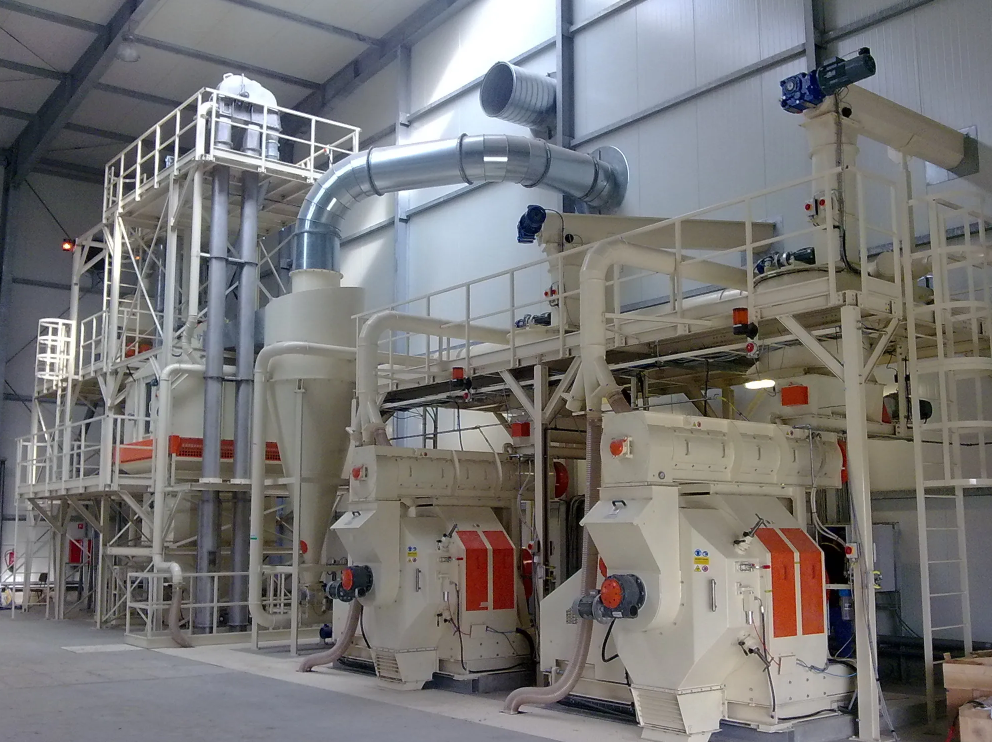Considerations on wood pelleting: problems related to transitional regimes
Pelleting wood is a complex process, especially if the wood pellet or biomass is produced from different materials. To produce high quality pellets, it is important to use good quality wood that ensures that the pellets are of a uniform size and shape, thus making them easier to burn.

Let's consider a pellet press that is working at full capacity and in optimal conditions
- stable motor amperage (maximum oscillation +/- 20 Amps)
- stable die and roller temperature (85-90°C)
- uniform pellet length (20-25 mm)
- uniform coloring of the pellet
- uniform pellet density
But what happens if for a few minutes (e.g. 20-30 minutes) the flow rate of the system upstream of the press is reduced, for example due to problems with the dryer, temporary lack of raw material or a change of raw material. Changing working conditions create a transient.
So what happens with the die temperature? As less product arrives, the temperatures of the extruder and those of the rollers increase.
What happens with the length of the pellet uniform? The pellet tends to stretch with the risk of not complying with the Enplus regulations (40mm max).
What happens with the uniform coloring of the pellet? The pellet becomes darker, this is clearly due to the longer residence time of the material in the die.
With uniform pellet density? The density of the pellets increases and this can also cause excessive vibrations during the pelleting phase.
During the transitional period, the working conditions change and consequently the results also change:
- there is less product and therefore the die works mainly in the central area
- the extruder therefore works in different conditions in the center compared to the peripheral rows
- the pellets are no longer uniform: they have different colours, different lengths and different densities
What happens when you go back to steady state?
Does the die start working again in a uniform way on the whole band or are the side rows blocked?
When the die works with little material, the side rows work less and tend to get clogged, this leads to a drop in production or even the risk of breakage of the die itself.
What happens if for a few minutes (for example 20-30 minutes) the humidity of the sawdust at the entrance to the dryer changes suddenly (for example from 40 to 60%)?
- The humidity of the product when it comes out of the dryer will undergo a variation, and it will take a few minutes before it returns to the stable situation.
- A wetter raw material is also more spongy and elastic. As the pellets exit the compression channel, they tend to expand by rubbing against the walls of the conical, rough and irregular outlet. The product struggles to pass through and tends to get stuck inside the holes, especially on the side rows.
- The die therefore works mainly in the central area, the die therefore works in different conditions in the center compared to the peripheral rows the pellets are no longer uniform: they have different colours, different lengths and different densities.
What happens if the dryer is fed with a mechanical shovel that loads from a square where the sawdust is stored outdoors in heaps that have a different surface humidity than the heart of the heap? (in summer the surface of the pile exposed to the sun is drier than the sawdust in the center of the pile; in winter the surface exposed to atmospheric agents is wetter than the central area of the pile)
- The humidity of the sawdust, loaded into the dryer, changes according to the point from which the mechanical shovel collects the sawdust.
- The humidity is variable at the entrance and, consequently, also at the exit of the dryer.